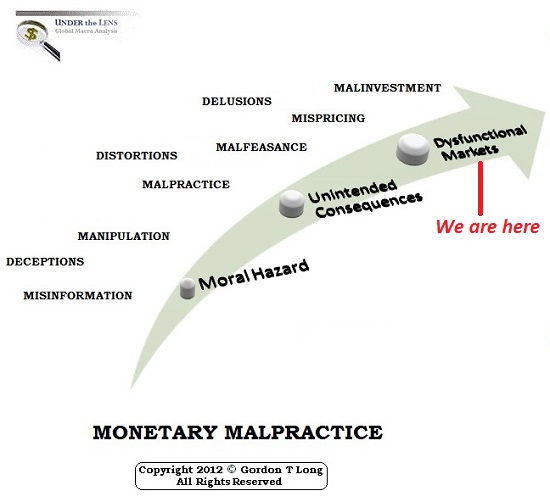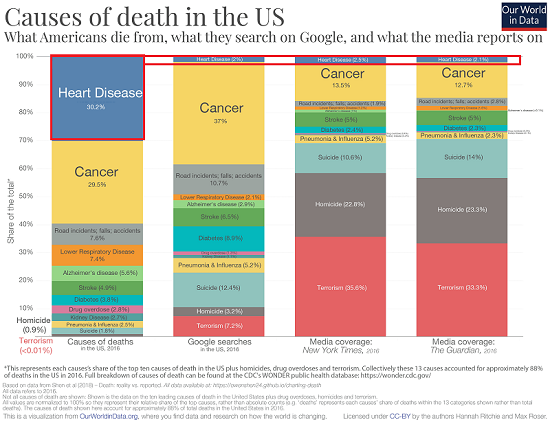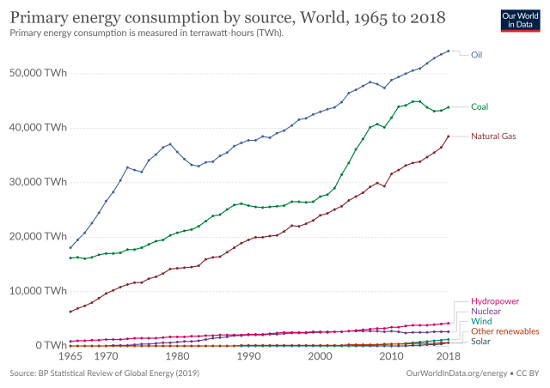What’s striking about our thought experiment is how little reliable data we have about the transmissibility of our hypothetical Virus Z and the long-term consequences of its mutations. Let’s run a thought experiment on a hypothetical virus we’ll call Virus Z, a run-of-the-mill respiratory variety not much different from other viruses which are 1) very small; 2) mutate rapidly and 3) infect human cells and modify the cellular machinery to produce more viral particles. Like other viruses, Virus Z continually improves the odds of future replication via the natural selection of any mutations which improve its replication capabilities. Since viruses need host cells to replicate, the key advantages selected through mutation are evading hosts’ immune responses to
Topics:
Charles Hugh Smith considers the following as important: 5.) Charles Hugh Smith, 5) Global Macro, Featured, newsletter
This could be interesting, too:
Nachrichten Ticker - www.finanzen.ch writes Die Performance der Kryptowährungen in KW 9: Das hat sich bei Bitcoin, Ether & Co. getan
Nachrichten Ticker - www.finanzen.ch writes Wer verbirgt sich hinter der Ethereum-Technologie?
Martin Hartmann writes Eine Analyse nach den Lehren von Milton Friedman
Marc Chandler writes March 2025 Monthly
What’s striking about our thought experiment is how little reliable data we have about the transmissibility of our hypothetical Virus Z and the long-term consequences of its mutations.
Let’s run a thought experiment on a hypothetical virus we’ll call Virus Z, a run-of-the-mill respiratory variety not much different from other viruses which are 1) very small; 2) mutate rapidly and 3) infect human cells and modify the cellular machinery to produce more viral particles.
Like other viruses, Virus Z continually improves the odds of future replication via the natural selection of any mutations which improve its replication capabilities. Since viruses need host cells to replicate, the key advantages selected through mutation are evading hosts’ immune responses to invading viruses.
As in all organisms in which advantageous mutations arise and eventually spread throughout the organism’s genetic instructions, the natural selection of mutations in viruses is not teleological, meaning there is no set goal to the evolutionary process other than whatever is advantageous in a particular setting.
To use a football analogy, the viral mutations don’t have a goal of advancing 10 yards to get a first down and continue down the field to score a touchdown. Any mutation which helps the virus evade getting tackled by the host immune system is conserved, as the viruses which get tackled and gobbled up by the immune system are no longer replicating, while the virus which evades the immune system continues replicating. Whatever mutations that enable it to evade getting tackled are conserved in the genetic coding of all future viruses.
In our thought experiment, Virus Z is a novel respiratory virus, i.e. it spreads via particles of moisture exhaled by human hosts, so most human hosts don’t have a natural immunity to it because their body’s immune system has never encountered it before. As a result, many people exposed to Virus Z become ill as the virus triggers an immune response (inflammation, fever, congestion) which disrupts various processes (oxygen uptake, digestion, etc.)
Like many other pathogens, Virus Z leads to the death of some infected people with compromised or weakened immune systems. In our thought experiment, Virus Z leads to the hospitalization of a percentage of infected people and the death of around 2% of all people who contract the illness.
This is not an exceptional rate in human history, and like many other pathogens, Virus Z tends to sicken the old and frail who have less robust immune systems.
But nonetheless, 2% is not zero, and so bioscience develops a vaccine to Virus Z which successfully reduces the severity of the illness and this naturally lowers the rate of those dying from the viral illness.
The vaccine is tested for one goal: does it reduce the severity of the illness or not? As a result of this goal and the testing protocol, it’s unknown if the virus can remain at low levels in vaccinated individuals and be transmissible to others.
In other words, it’s unknown if some vaccinated individuals might be contagious even though they exhibit no symptoms of illness.
Just as flu shots are not 100% effective against all strains of influenza, it turns out the Virus Z vaccine is highly effective in reducing the odds of contracting the virus and the severity of any subsequent illness, but it doesn’t reduce the transmissibility to zero or the number of those who become ill despite being vaccinated to zero.
Since it’s not practical to constantly test every vaccinated individual, the number of vaccinated individuals who still harbor low levels of virus while being symptom-free (i.e. asymptomatic) is unknown. A vaccinated individual might be virus-free but then be reinfected by exposure to a new variant that survives the immune onslaught but does not generate symptoms.
So in this pool of X number of vaccinated individuals, the virus continues to mutate, with those mutations which help the virus evade the vaccine-enhanced immune system of the host being the mutations which are conserved, as the viruses which get tackled by the immune system no longer replicate while those with the helpful mutation continue replicating.
The viruses which evade the immune system tacklers are also selected for improved transmissibility, meaning those with limited transmissibility don’t infect other hosts while those with improved transmissibility (i.e. are more contagious) spread with relative ease to other hosts, both unvaccinated and vaccinated, as the vaccine suppresses transmissibility but doesn’t reduce it to zeeo.
Since the goal of the vaccine program was to reduce the number of those becoming severely ill and requiring hospitalization, the system only counts individuals who become ill enough to require hospitalization: those hospitalized are tabulated in two fields, unvaccinated or vaccinated.
As expected, the majority of those hospitalized with severe illness are unvaccinated, as the vaccine effectively reduced the number of people who develop severe cases after contracting the disease.
What the vaccine doesn’t do is reduce the number of vaccinated people who contract the disease to zero, nor does it reduce the transmissibility of vaccinated carriers of the virus to zero.
This means some unknown percentage (unknown because it’s not practical to routinely test tens of millions of people) of vaccinated individuals become carriers of the virus. Some unknown percentage will contract the illness but not severely enough to require hospitalization, so they won’t be counted by the system. A relative few will require hospitalization, and will be counted as “breakthrough cases,” i.e. vaccinated individuals who contracted the virus, became ill and required hospitalization.
But because the system doesn’t count vaccinated people who become ill and stay at home, the number of officially tallied “breakthrough cases” is an undercount of the total number.
Since relatively few vaccinated individuals who are ill at home will drag themselves to a testing facility to confirm they have Virus Z, the total number of vaccinated individuals who are carriers (i.e. are contagious) and who became ill enough to stay home is also unknown.
Like many other viruses, Virus Z triggers long-term debilitating symptoms in a percentage of those who become ill, and some percentage of these long-term effects occur in individuals whose illness was relatively mild. Since it’s it’s not practical to routinely test tens of millions of vaccinated individuals, the number who contracted the illness and are experiencing long-term debilitating symptoms is unknown.
What we do know via careful contract tracing is that one vaccinated individual transmitted the virus to 20 other people, both unvaccinated and vaccinated, in one encounter in an enclosed space, and this variant is genetically distinct from the initial Virus Z.
This is worrisome, as the transmissibility of a virus is more dangerous than than the mortality rate of those infected. If a virus with low transmissibility causes the death of 5% of those who contract the illness, and it sickens 1,000 people, then 50 of those stricken will die. A highly transmissible virus with a mortality rate of 2% may appear less dangerous, but if it sickens 100,000 people and 2% die, that’s 2,000 people who lost their lives.
Since the virus has been mutating in X number of vaccinated individuals at a rate of mutation typical of viruses (i.e. a high rate), a small but significant number of these millions of mutations help the mutated virus evade the host immune system and whatever advantages were conferred by the vaccine.
Within this pool of mutations which evaded the immune system tacklers, those mutations which also enhance transmissibility spread rapidly to other human hosts, both unvaccinated and vaccinated, depending on the relative effectiveness of the vaccination in each individual, the relative robustness of their immune system and a variety of other complex factors such as partial natural immunity, exposure to previous variants of Virus Z and so on.
Within this pool of mutations that enhance transmissibility, some percentage will enhance transmissibility to younger, healthier individuals who were less susceptible to the initial Virus Z.
What’s striking about our thought experiment is how little reliable data we have about the transmissibility of our hypothetical Virus Z and the long-term consequences of its mutations. What’s striking is the number of important data fields which are unknown, only haphazardly collected, or in which data is so incomplete that it is misleading.
Science cannot advance if data is unavailable, unreliable or so selectively gathered that it’s misleading. What’s striking about our thought experiment is how little is reliably known about Virus Z’s transmissibility, virulence or long-term effects.
Tags: Featured,newsletter







